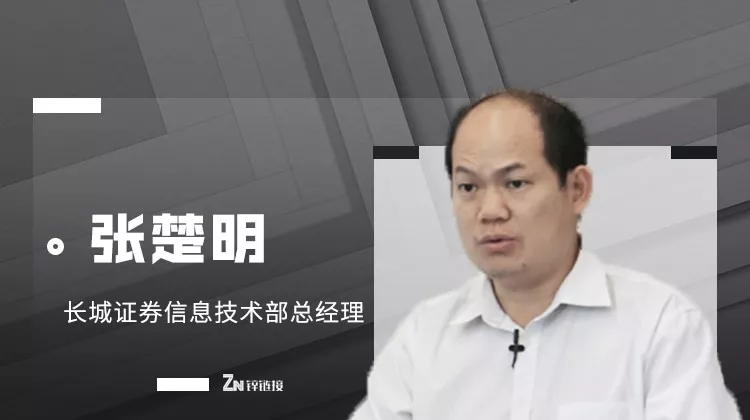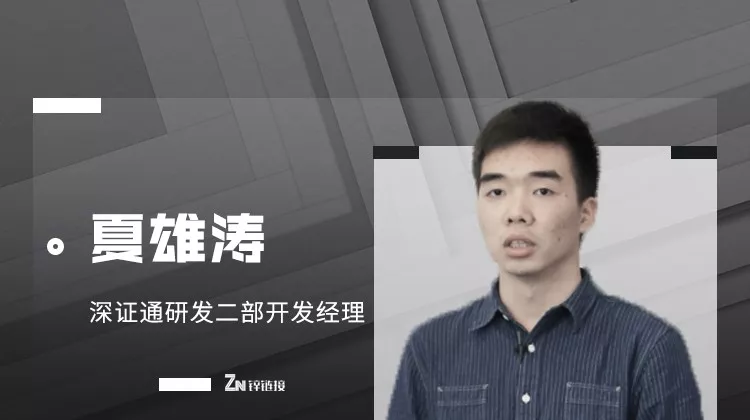Blockchain in the brokerage industry "money way"
The financial industry is the most popular area for blockchain applications, and many securities companies have joined the army of exploring the “blockchain+” field. In general, brokerage institutions are very cautious about the use of new technologies. As a new technology, blockchain is being explored in combination with brokerage business. Technology and business are actively tackling various difficulties. From the current point of view, The application has already begun to pay off.
It is reported that in January 2019, based on FISCO BCOS, Shenzhen Securities Co., Ltd., United Nations Tai Junan, Pacific Insurance, Weizhong Bank and other sponsored deposit services, Shenzhen Securities Co., Ltd. provided Shenzhengtong blockchain service platform on the deposit certificate service, Shenzhen Stock Exchange Tong is the provider of the deposit service platform, the signature verification service provided by Yunzhidao, and Changcheng Securities as the first brokerage institution for the pilot financial management certificate business. This is the first blockchain application platform for the brokerage to land the service.
So, what is the layout of brokers in the blockchain field? What difficulties are overcome during the exploration process?
On March 30, Zhang Chuming, general manager of Great Wall Securities Information Technology Department, Xia Xiongtao, development manager of Shenzhen Securities and Communications Co., Ltd., Xiu Xiongwei, chairman of Yunzhidao, and Mo Nan, senior architect of FISCO BCOS, held in the Golden Alliance. In the “Meeting 2019” event, the theme of “The Money Way” of the brokerage blockchain was shared.
- The SEC issues regulatory guidelines: such digital currency is not a "securities"
- Thunder: The big step is to transform to the blockchain, but commercialization is still a problem.
- Opinion: Is the bull market for bitcoin coming early?
They have the pain points of the current business of securities firms, the application of blockchain in the securities industry, how the blockchain solves the difficulties of depositing and trusting on the chain, and shares the practical cases of FISCO BCOS.
Blockchain application in the securities industry

1. Look at the pain points of the securities industry from the regulatory background
Regarding the application scenario of blockchain in the securities industry, the foreign financial blockchain mainly revolves around the clearing and settlement of stock transactions. The domestic market is mainly used for over-the-counter trading and depository supervision. At present, there are still few ABCD technology projects in the brokerage industry. At present, there are many pain points and difficulties in the securities industry, and it is urgent to use blockchain technology to solve them.
1) Fulfilling regulatory requirements and leaving traces difficult to prove
According to Article 19 of the “Administrative Measures for the Appropriateness of Securities and Futures Investors”: Financial institutions should provide special written risk warnings on the risk that the product or service is higher than the ability of the investor. Article 25 stipulates that: financial institutions shall have perfect supporting traces, which shall be confirmed by investors electronically; Article 32 stipulates that the disclosure of materials shall be kept for a long period of time, and the law shall not be less than 20 years; Article 34 provides that In the event of a dispute with an ordinary investor, the financial institution shall provide proof that the corresponding obligation has been fulfilled to the investor; in addition, the Securities Investment Institution Investment Guide states that the securities company shall sign and confirm by the investor when providing services to the client. .
2) The process of purchasing products is cumbersome, the SMS authentication delays, and the customer experience is poor.
In the actual wealth management business, the purchase process of public offerings, private placements and asset management products is cumbersome, and the SMS verification process is delayed, resulting in poor customer experience. Not conducive to business development, affecting sales business needs.
3) It is difficult for customers to prove their key behaviors
When a dispute arises with a customer, the securities company must provide evidence to prove that it has fulfilled its obligation to inform. However, all relevant traces are only in the securities company's database, and the credibility is not enough for the customer. Therefore, it is necessary to rely on a single point of evidence provided by a third-party depository.
4) Data is easily tampering
This is a common problem in the industry. As an emerging technology, blockchain can solve the problem of poor data security. The deposit-chain integration of the blockchain can realize synchronization of the whole network, the data is not falsified, the trace information can not be denied, and the data can be encrypted, and the ability to resist attacks is strong.
2. Application scenario of blockchain in brokerage
The blockchain law has a foundation, such as the electronic signature law, the blockchain case of the Hangzhou Internet Court's judgment, and the highest law's recognition of the blockchain. With these foundations, we will ensure that blockchain technology is applied to the business.
Blockchain scenarios must have multi-party collaboration, data mining, data sharing, and decentralization. All in all, it is cost-effective, safe and credible.
At present, brokerage companies mainly use blockchain technology in public funds, private equity funds, income certificates, asset management products, and rational wealth management.
In the future, it is possible to expand into these businesses. 1) Appropriate management and retention of investors in the wealth management business; 2) Customer behavior, customer login, product inquiry, product browsing, transaction ordering; 3) Off-site account opening and business processing; 4) Financial management products Traces of contracts, risk warnings, and product specifications.
The securities industry is based on the design of blockchain trusted certificate service

As a provider of IT infrastructure services for the securities industry, Shenzhen Zhengtong has been actively exploring the typical application of blockchain in the industry with relevant brokers. For the pain points and needs of the securities industry, the blockchain has been designed and implemented. Certificate service design.
The first is to build a coalition chain. It is the several organizations of the Golden Chain Alliance to build a coalition chain and to be a core node for the issuance of certificates and some services.
The second is to join the judicial appraisal agency. Authorities such as the Judicial Identification Institute joined as data nodes to add credit to our depository chain.
The third is the involvement of institutional users. It can be used as a coalition chain node or a docking alliance chain through our depository platform.
The fourth is to introduce the concept of the main chain and sub-chain. Blockchain deposit service as a basic service, connect different business chains, realize cross-chain communication and collaboration, and reduce information islands

Screenshot from PPT
This is our system architecture diagram. The bottom layer is a deposit chain built by Shenzhen Zhengtong, Pacific Insurance, Guotai Junan and Weizhong Bank. Weizhong provided the underlying development technical support. As a provider of the deposit service platform and a signature verification service provided by Yunzhidao, Changcheng Securities was the first pilot user.

The above is the process of depositing the certificate. The process of obtaining evidence is that the user (the broker) can take the signed contract to the platform for verification. The file is uploaded to the platform for hashing. The hash value is used to find the corresponding transaction on the chain. If it can be found, it indicates that he actually signed the agreement. If there are multiple results, a list of uploaded device information will be displayed, specific information will be located, and a certificate will be issued.
Based on the existing deposit and deposit services, including the planning and design of electronic contracts, Shenzhen Zhengtong will continue to deepen and expand the application scope and depth of the blockchain in the industry, and provide an infrastructure layer for the application of blockchain in the securities industry. support.
How does JustKey solve the trust problem of mobile and blockchain nodes?

As we all know, the blockchain mainly solves the trust problem in the deposit certificate scenario. Before the data is on the chain, how to ensure the authenticity and integrity of the data is a key point that is especially important, and it is also the “last mile” of all blockchain applications.
Then the principle of solving trust is zero trust, and all business requests must be authenticated. Then it is mainly divided into these four aspects of certification, 1. Identity authentication: who is the user; 2. Equipment certification: whether it is legal equipment; 3. Application certification: whether it is pirated or tampered with; 4. Data authentication.

JustKey's complete solution for trusting mobile and blockchain nodes is:
First, a device-based identity authentication service is provided through a white-box cryptographic algorithm.
Second, the white box algorithm protects the private key generation on the mobile side, ensuring the security of the private key, which is an advantage over the CA certificate.
Third, the introduction of the blockchain has solved the problem of the credibility of the deposit.
Fourth, the Guangdong Arbitration Commission was introduced as an independent node in the alliance chain to provide legal arbitration support and endorsement. To achieve safety and non-repudiation effects without affecting convenience, this is the advantage of our program: safe, reliable, efficient and authoritative. From the technical level, the overall system architecture is divided into business services, deposit certificates services, signature services, and the general system division of labor.
The core technology is actually an innovative white box of passwords. The existing encryption method is basically a black box operation, and under the premise of the same algorithm, the core is a protection key. The mobile phone does not have an encryption chip, and how to protect the key becomes a difficult point.
Our solution is to generate a white-box cryptographic algorithm for each mobile phone separately, which solves the key hiding problem due to the different algorithms of each mobile phone.
Application Practice of FISCO BCOS Blockchain-Inter-Agency Reconciliation Platform

The first blockchain project of Weizhong Bank is an inter-agency reconciliation platform. The bank's traditional reconciliation method requires a special line, which is usually used in the middle of the night for reconciliation.
In this way, each bank needs to communicate communication methods, file formats, transmission protocols, and private lines for communication. The cost is very high. After the special line is set up, it faces the high cost of building a night reconciliation line, but the usage time is only 10 minutes.
Then use the blockchain technology, do not take the special line, take the public network, build a P to P network blockchain.
The advantages of this network are:
1) Availability: P2P network automatically plans the path, using key negotiation and channel encryption technology to ensure node security;
2) Consistency: The consensus mechanism ensures that the accounting data is not tampered with, and the signature mechanism makes the cost of tampering extremely high;
3) Standardization: just open the public network port, no need to visit the machine room and the dedicated line;
4) Low cost : the cost of the public network is much lower than the dedicated line;
5) Security: Encrypted communication is used between nodes, and the user's KYC data and the amount of plain text are not linked;
6) Bandwidth: parallel transmission;
7) Timeliness: The night reconciliation is transformed into a quasi-real-time reconciliation. At the end of each day, the flow of the transaction flow collection system and the flow of the core system are internally reconciled and reissued.

Blockchain reconciliation vs. traditional reconciliation, from PPT screenshots
In addition to the inter-agency reconciliation platform, the second largest blockchain application of Weizhong is the application of the arbitral chain to the depository, called the depository chain, to prevent the risk of evidence loss and tampering.
Based on this, we designed a smart contract for blockchain. Save each piece of evidence as a smart contract of evidence, chained for easy access to evidence.
Text: Chen Haining, Aubrey
Editor: Wang Qiao
We will continue to update Blocking; if you have any questions or suggestions, please contact us!
Was this article helpful?
93 out of 132 found this helpful
Related articles
- March blockchain application monthly report: global blockchain application is accelerating, and the number of China is significantly leading
- The ultimate guide to understanding the differences between PPIO, Filecoin and Storj
- Report: Bitcoin is growing at an incredible rate and can surpass Visa in 10 years
- Ethereum's profits are not enough to ensure its safety
- The blockchain concept stock boom has come again, and many companies are busy clarifying the "hot spot"
- Ethereum co-founder Vitalik Buterin: blockchain technology and cryptocurrency are inseparable
- 3.6 billion dollars! – 2019Q1 Dapp Data Report






